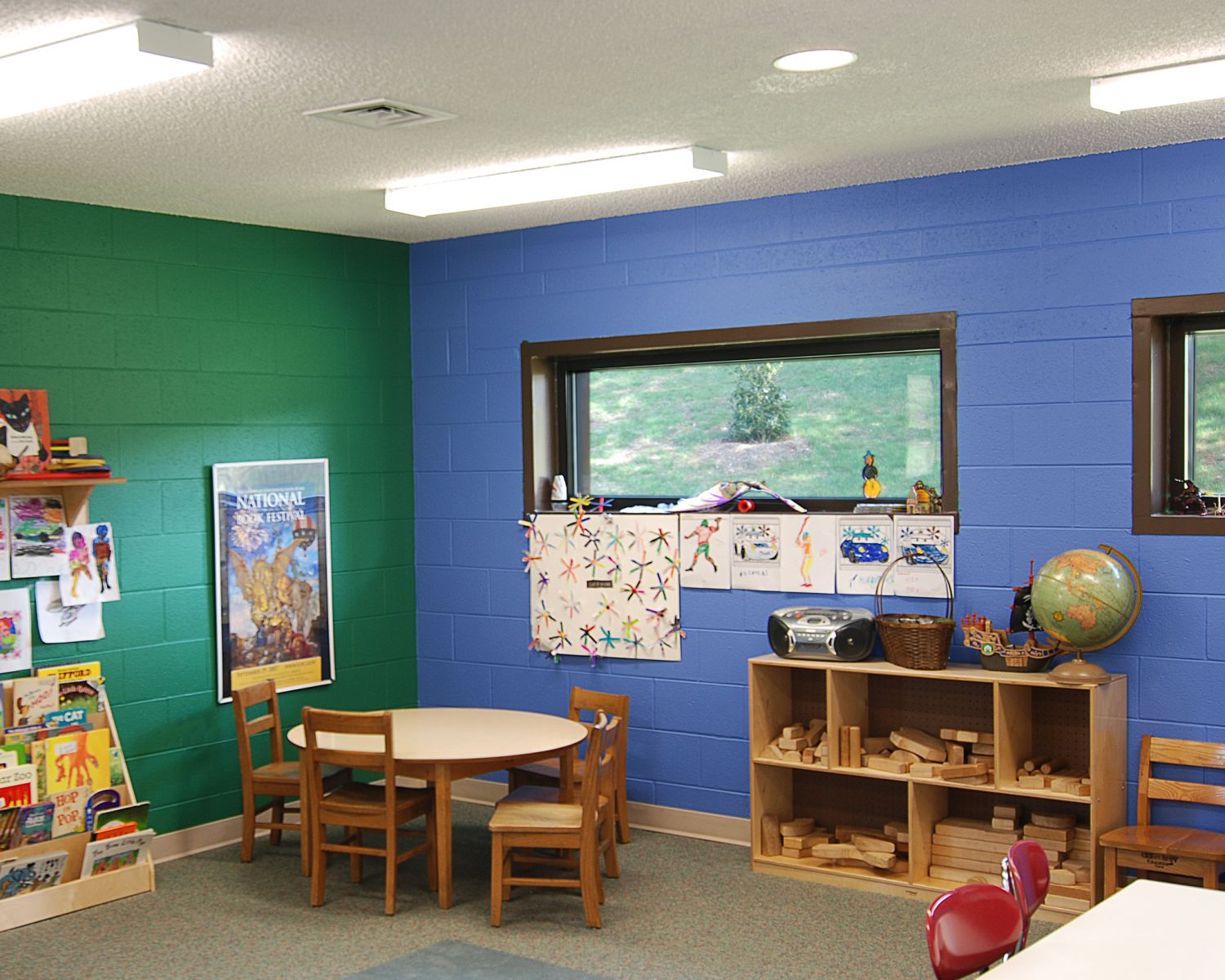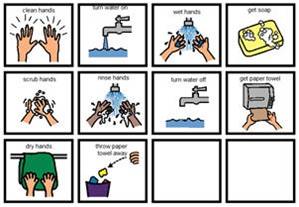Principles of universal design applied to early learning environments
 A well-organized early childhood environment revolves around activity centers and routines that reflect a curriculum designed to foster developmentally appropriate learning through play and exploration. It also reflects a delicate balance between stability and flexibility. Centers provide all children access to learning materials and concepts, as well as the means to interact with their peers, teachers and caregivers.
A well-organized early childhood environment revolves around activity centers and routines that reflect a curriculum designed to foster developmentally appropriate learning through play and exploration. It also reflects a delicate balance between stability and flexibility. Centers provide all children access to learning materials and concepts, as well as the means to interact with their peers, teachers and caregivers.
For example: Centers can be equipped with picture symbols, communication boards and devices that offer key vocabulary for theme-based concepts and specific center activities. Switches on electronic devices such as tape recorders are enable all children can activate them independently. Books can be displayed individually on accessible racks so they are easily picked up.
Resource
- Universal Design: A Strategy to Support Students' Access to the General Education Curriculum applies the principles of universal design to education, and links it to universal design for learning.
Consider these elements of design when selecting materials, equipment, furniture or a room layout for classrooms, play grounds and education activities. Bremer et al, 2002
1. Equitable design is useful and accessible to children with diverse abilities.
Example: Ramps, instead of doors, make entrances with stairs accessible to children with sensory and physical impairments; sand table (vs. sand box) can be reached by children in wheelchairs.
2. Flexible design accommodates a wide range of use by children with varying abilities and preferences
Example: Puzzle pieces with pegs are easily grasped; colorful toys that make sounds when moved also are more easily tracked by children with visual and auditory impairments.
3. Simple and intuitive design is easy to understand, regardless of a child’s experience, knowledge, language skills, or concentration level.
Example: Girls/boys bathroom door, wait , stop symbols and exit signs are easily recognized.
4. Information is easily perceived and understood by all children regardless of conditions or the user’s sensory abilities.
Example: A sequenced picture schedule reinforces verbal instructions about a child’s daily activities ( Visit Allegheny Early childhood Technical Assistance Center for this file and others)

5. Tolerance for error minimizes hazards and any adverse or accidental consequences.
Example: Unbreakable toys with sturdy parts; laminated pages of a storybook; computer games with an “undo” button.
6. Low physical effort requires minimal energy to use materials, furniture, and equipment efficiently and comfortably with little fatigue.
Example: Power assist doors, faucets with levers, touch switch for lights, materials stored at a preschooler’s reach level.
7. Size and space is appropriate for approach, reach, manipulation, and use regardless of a child’s size, posture, or mobility.
Example: Physical layout of a classroom has space for assistive devices; all children have a clear line of sight to the teacher and displayed material.

